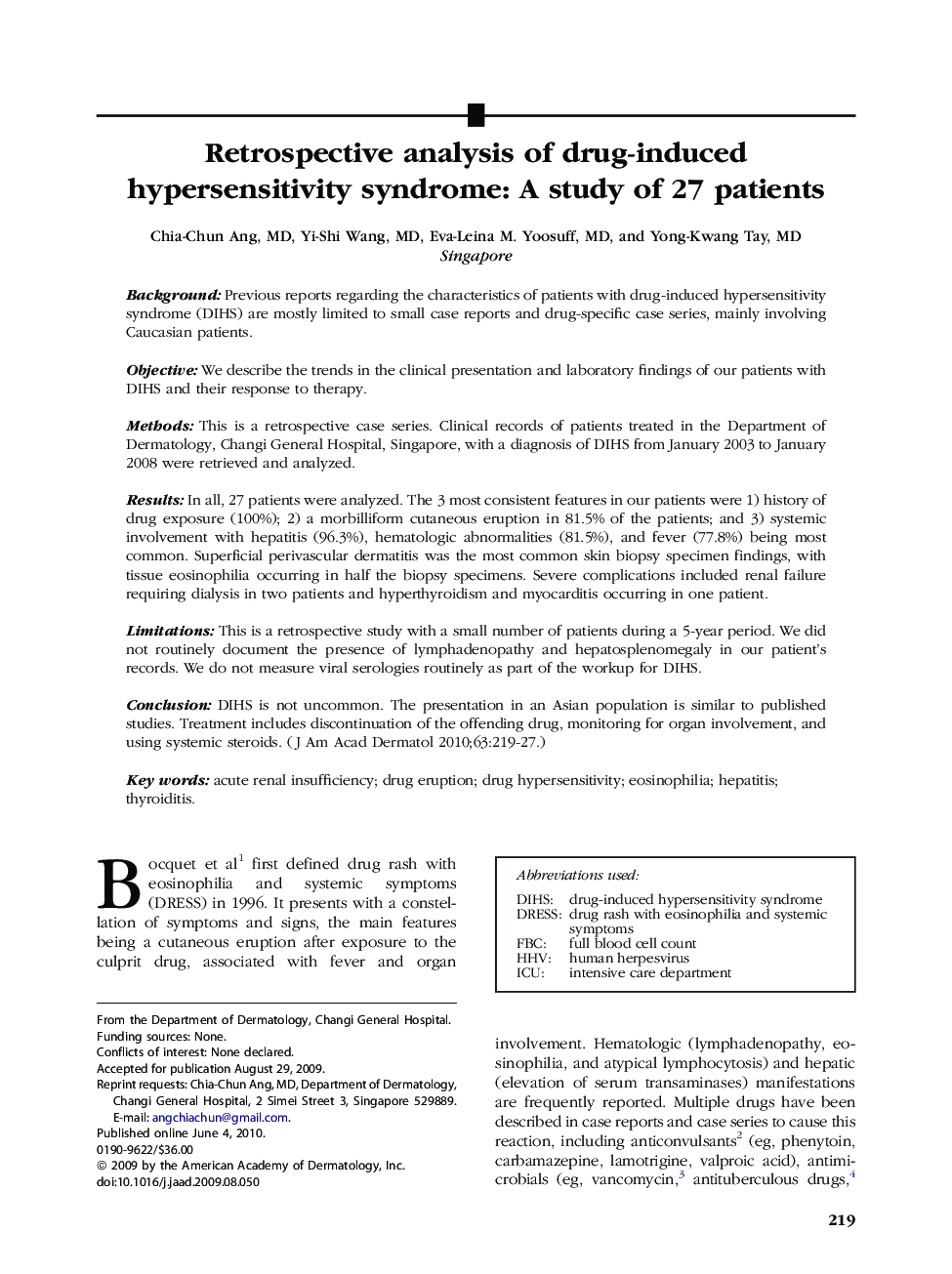| Article ID | Journal | Published Year | Pages | File Type |
|---|---|---|---|---|
| 3208329 | Journal of the American Academy of Dermatology | 2010 | 9 Pages |
BackgroundPrevious reports regarding the characteristics of patients with drug-induced hypersensitivity syndrome (DIHS) are mostly limited to small case reports and drug-specific case series, mainly involving Caucasian patients.ObjectiveWe describe the trends in the clinical presentation and laboratory findings of our patients with DIHS and their response to therapy.MethodsThis is a retrospective case series. Clinical records of patients treated in the Department of Dermatology, Changi General Hospital, Singapore, with a diagnosis of DIHS from January 2003 to January 2008 were retrieved and analyzed.ResultsIn all, 27 patients were analyzed. The 3 most consistent features in our patients were 1) history of drug exposure (100%); 2) a morbilliform cutaneous eruption in 81.5% of the patients; and 3) systemic involvement with hepatitis (96.3%), hematologic abnormalities (81.5%), and fever (77.8%) being most common. Superficial perivascular dermatitis was the most common skin biopsy specimen findings, with tissue eosinophilia occurring in half the biopsy specimens. Severe complications included renal failure requiring dialysis in two patients and hyperthyroidism and myocarditis occurring in one patient.LimitationsThis is a retrospective study with a small number of patients during a 5-year period. We did not routinely document the presence of lymphadenopathy and hepatosplenomegaly in our patient's records. We do not measure viral serologies routinely as part of the workup for DIHS.ConclusionDIHS is not uncommon. The presentation in an Asian population is similar to published studies. Treatment includes discontinuation of the offending drug, monitoring for organ involvement, and using systemic steroids.
